Given a string S and a string T, find the minimum window in S which will contain all the characters in T in complexity O(n).
Example:
Input: S = "ADOBECODEBANC", T = "ABC"
Output: "BANC"
Note:
- If there is no such window in S that covers all characters in T, return the empty string
"". - If there is such window, you are guaranteed that there will always be only one unique minimum window in S.
题意:
给定字符串S 和 T, 求S中可以cover T所有元素的子集的最小长度。
Solution1: Two Pointers(sliding window)
1. scan String T, using a map to record each char's frequency
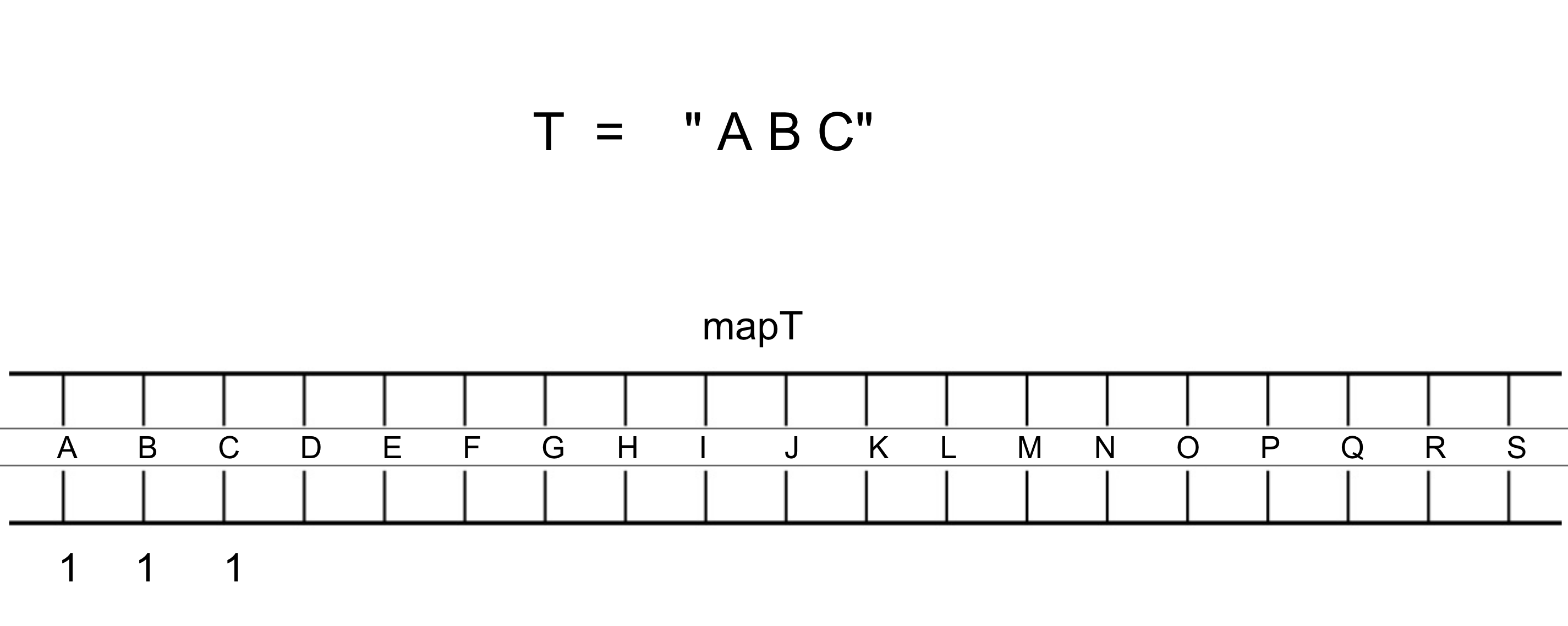
2. use [leftMost to i] to maintain a sliding window, making sure that each char's frequency in such sliding window == that in T
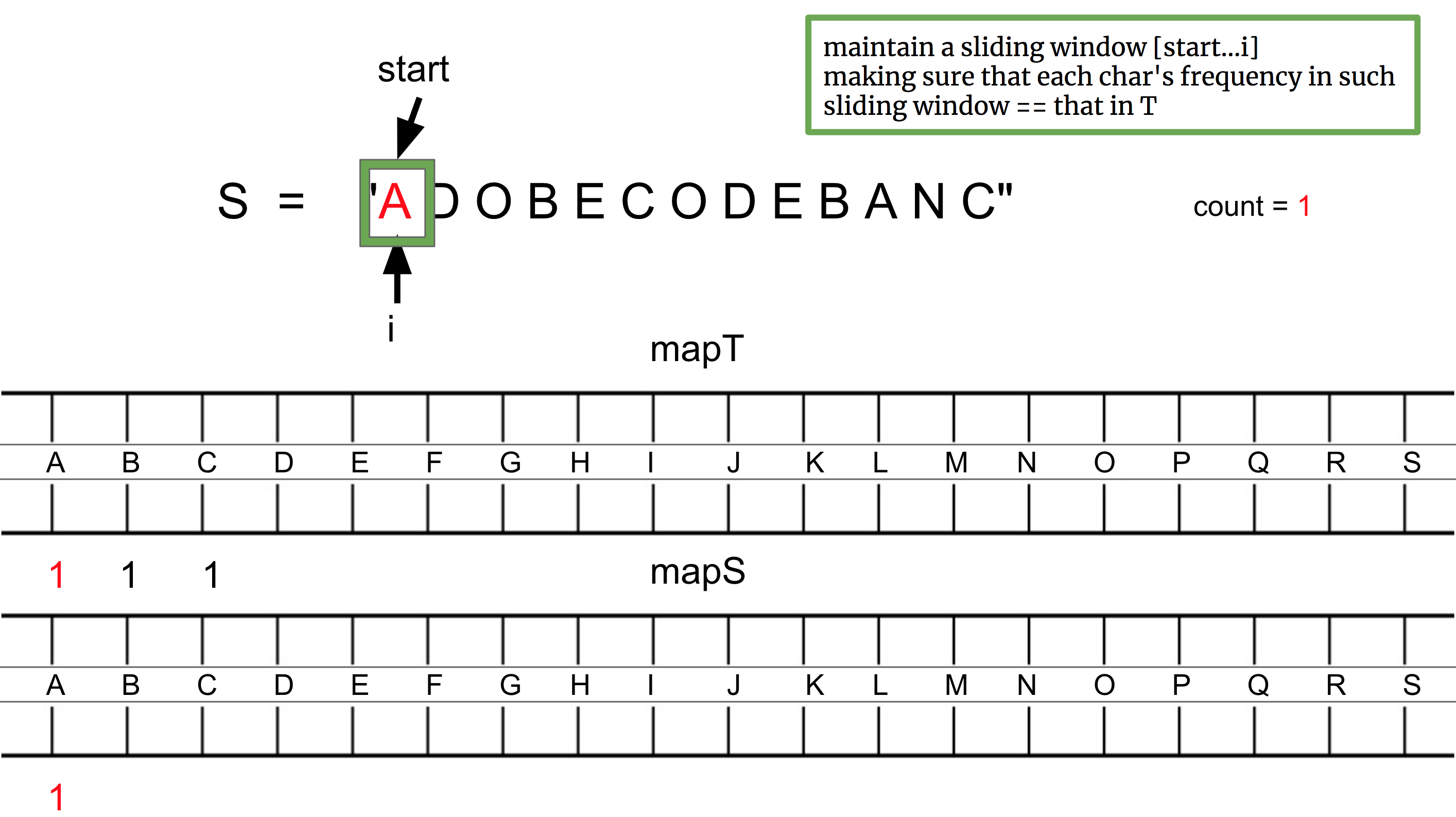
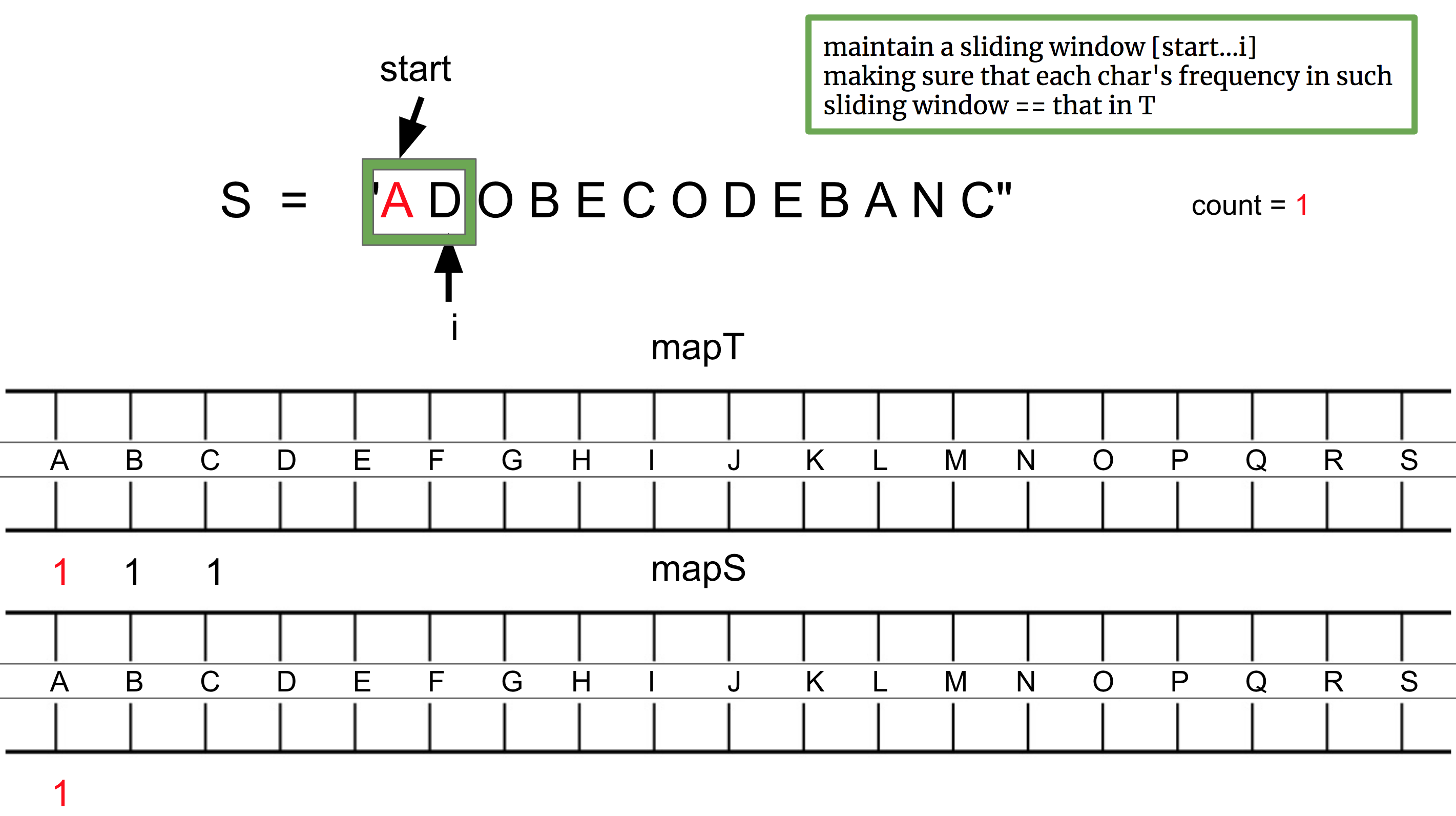
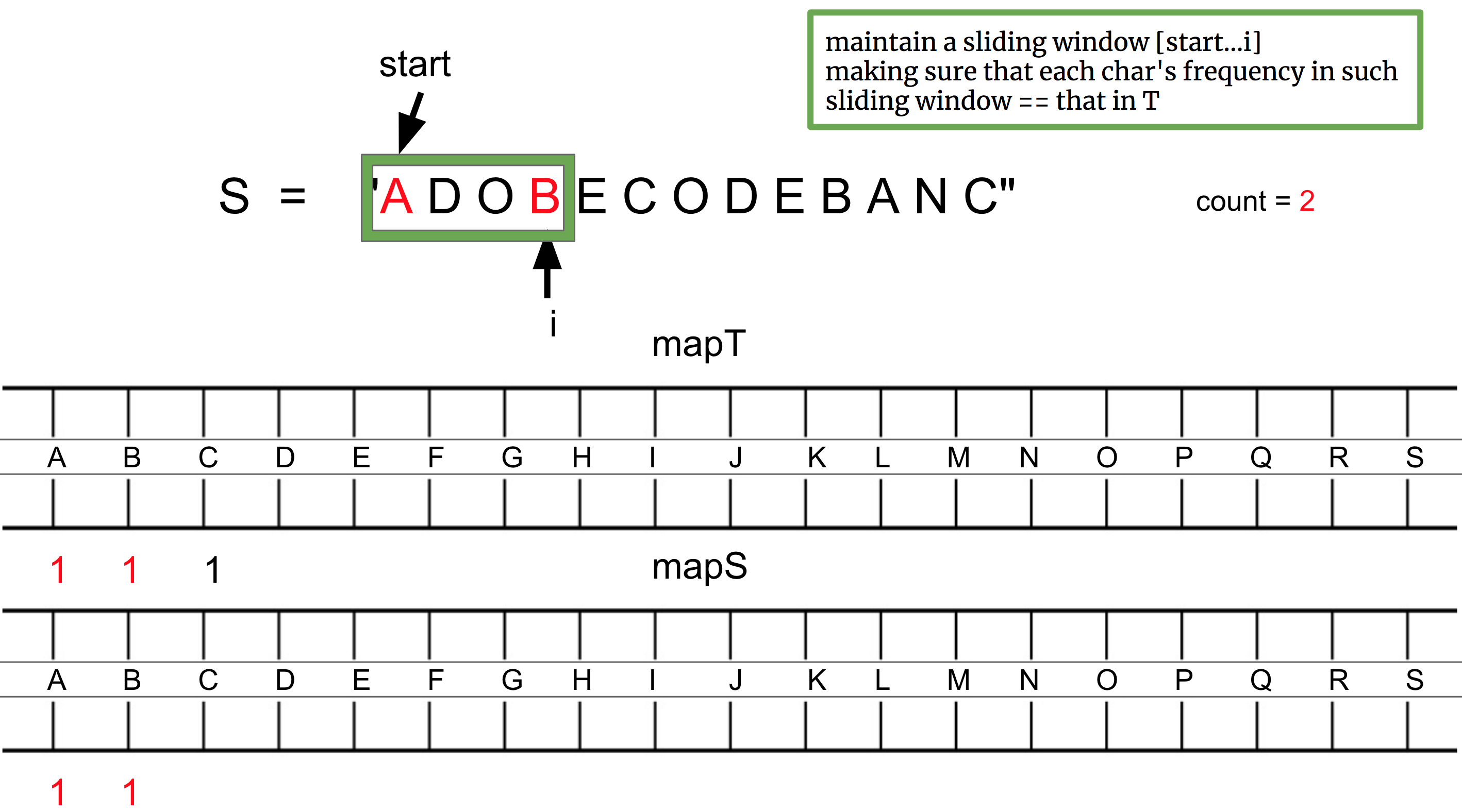
3. if mapS [S.charAt(start)] > mapT [S.charAt(start)] , it signs we can move sliding window
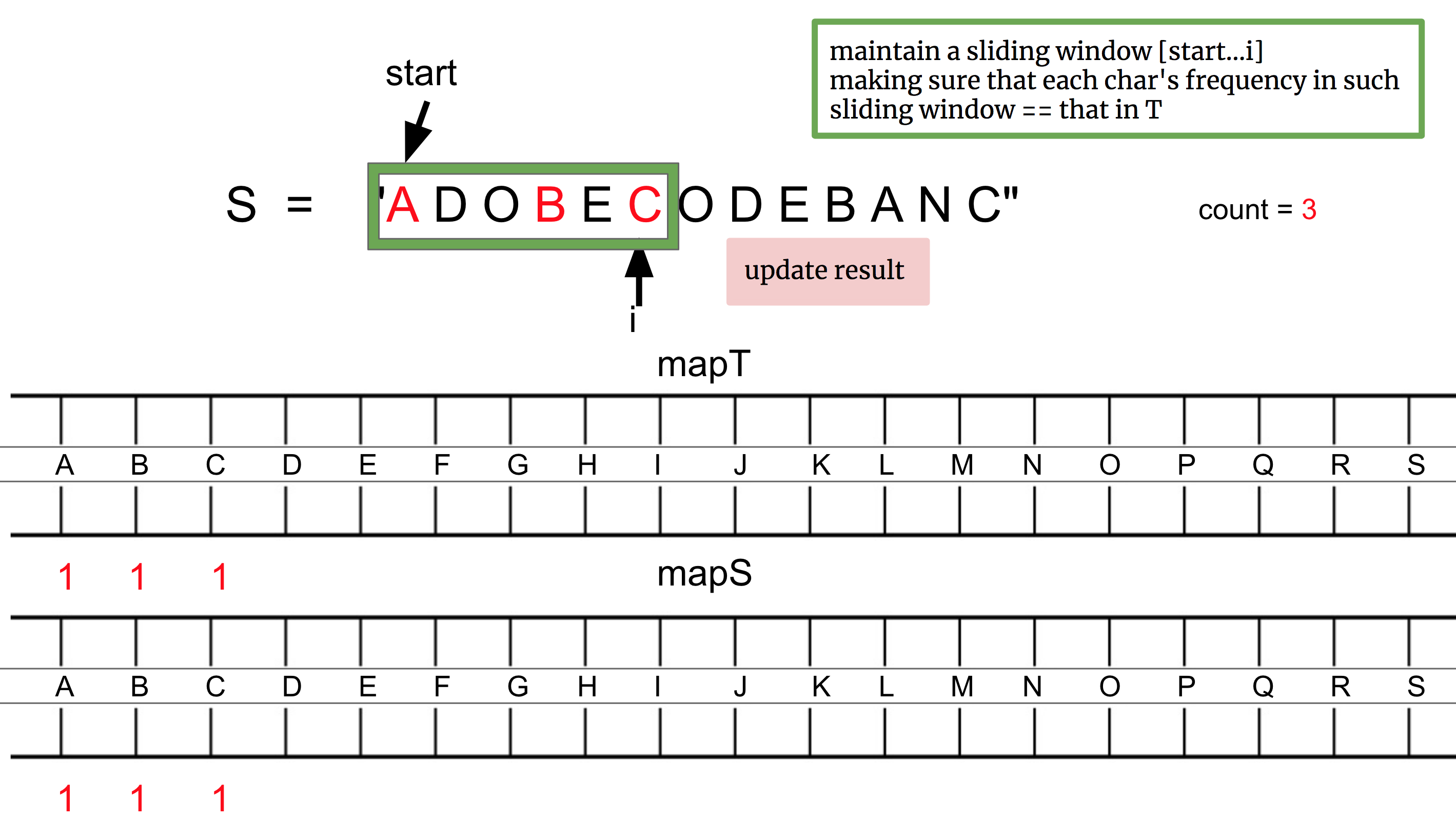
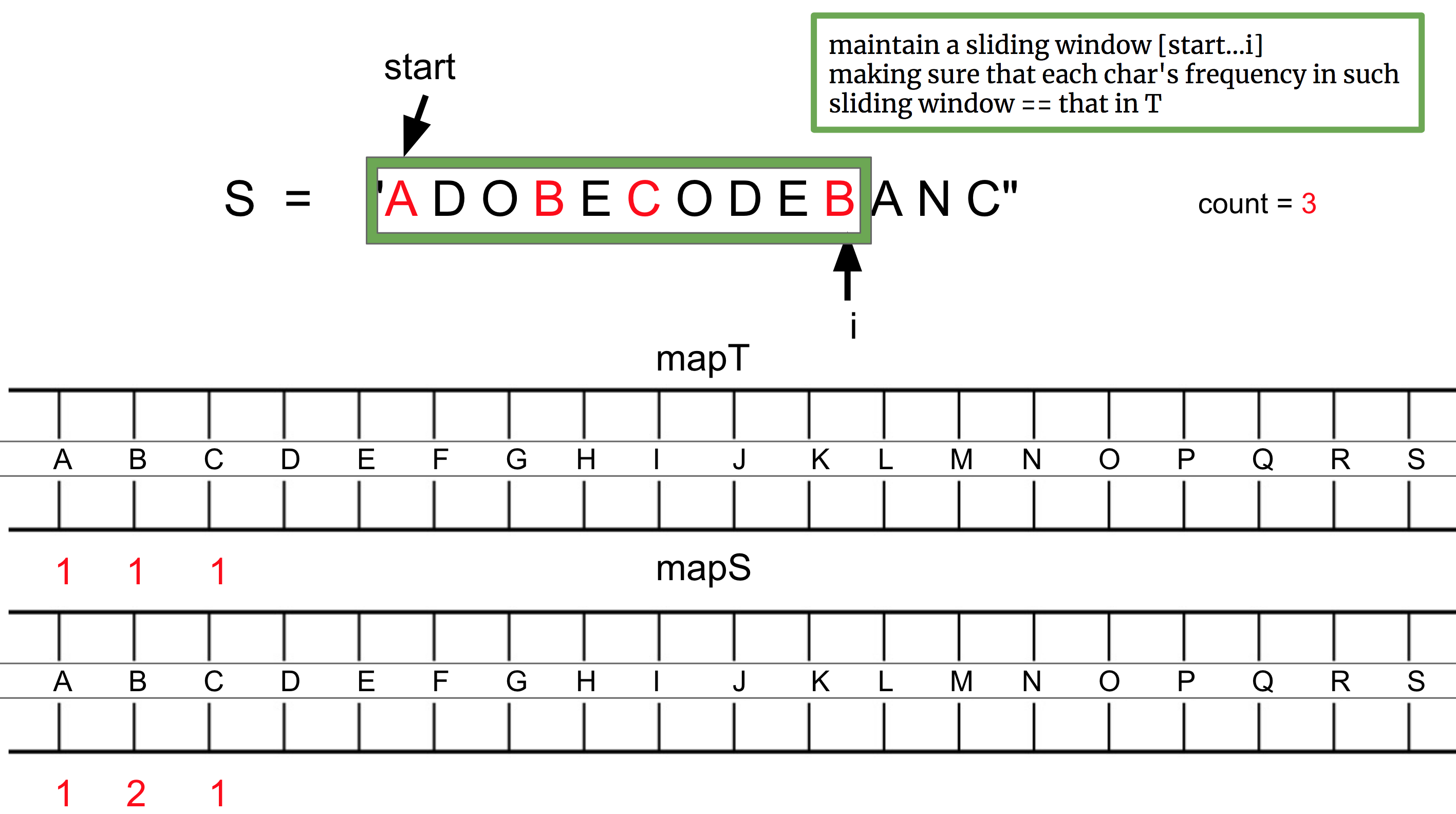
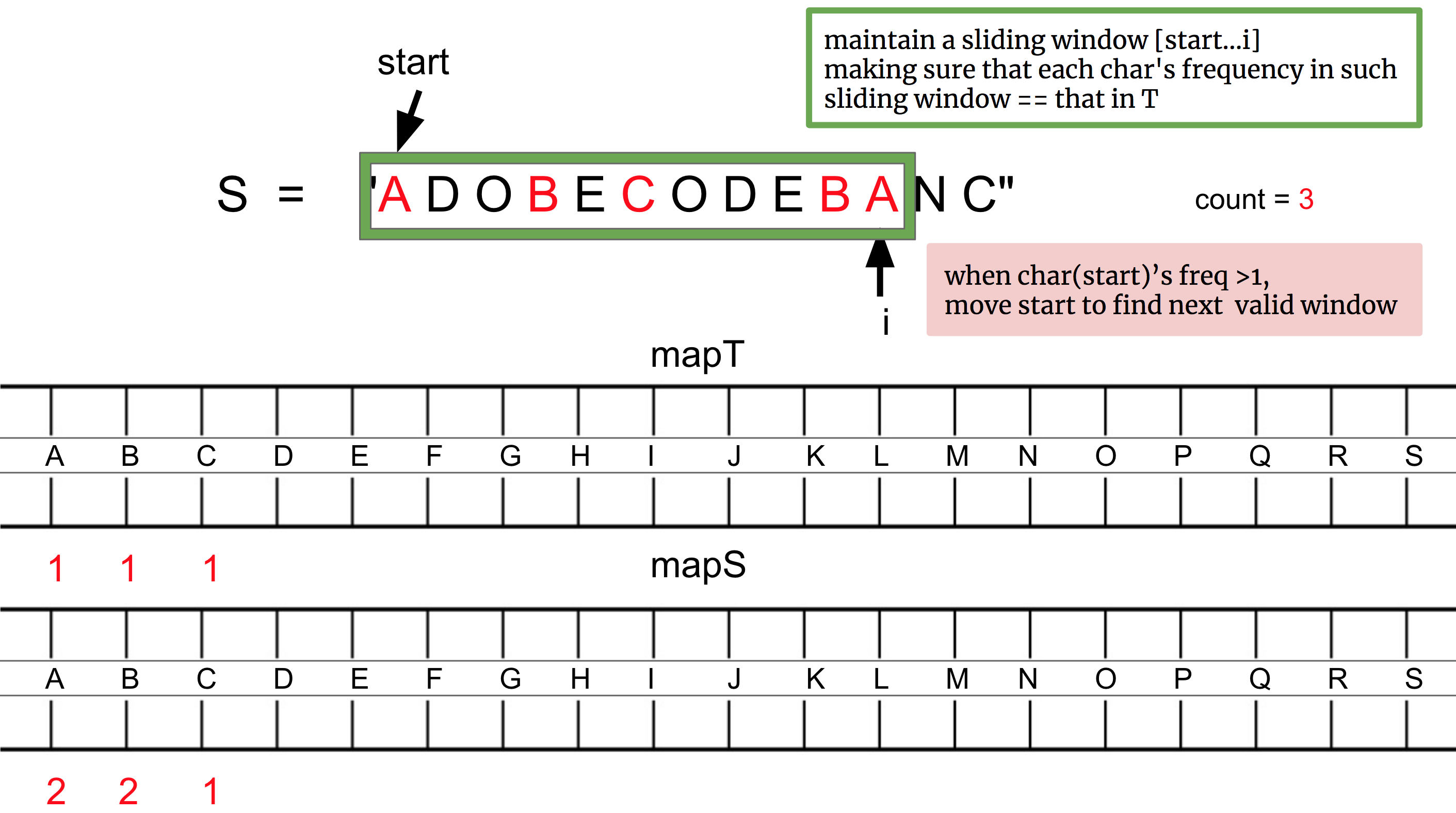

4. how to find the next sliding window? move leftMost, meanwhile, decrement mapS [S.charAt(start)] until we find each frequency in [start to i] == that in T
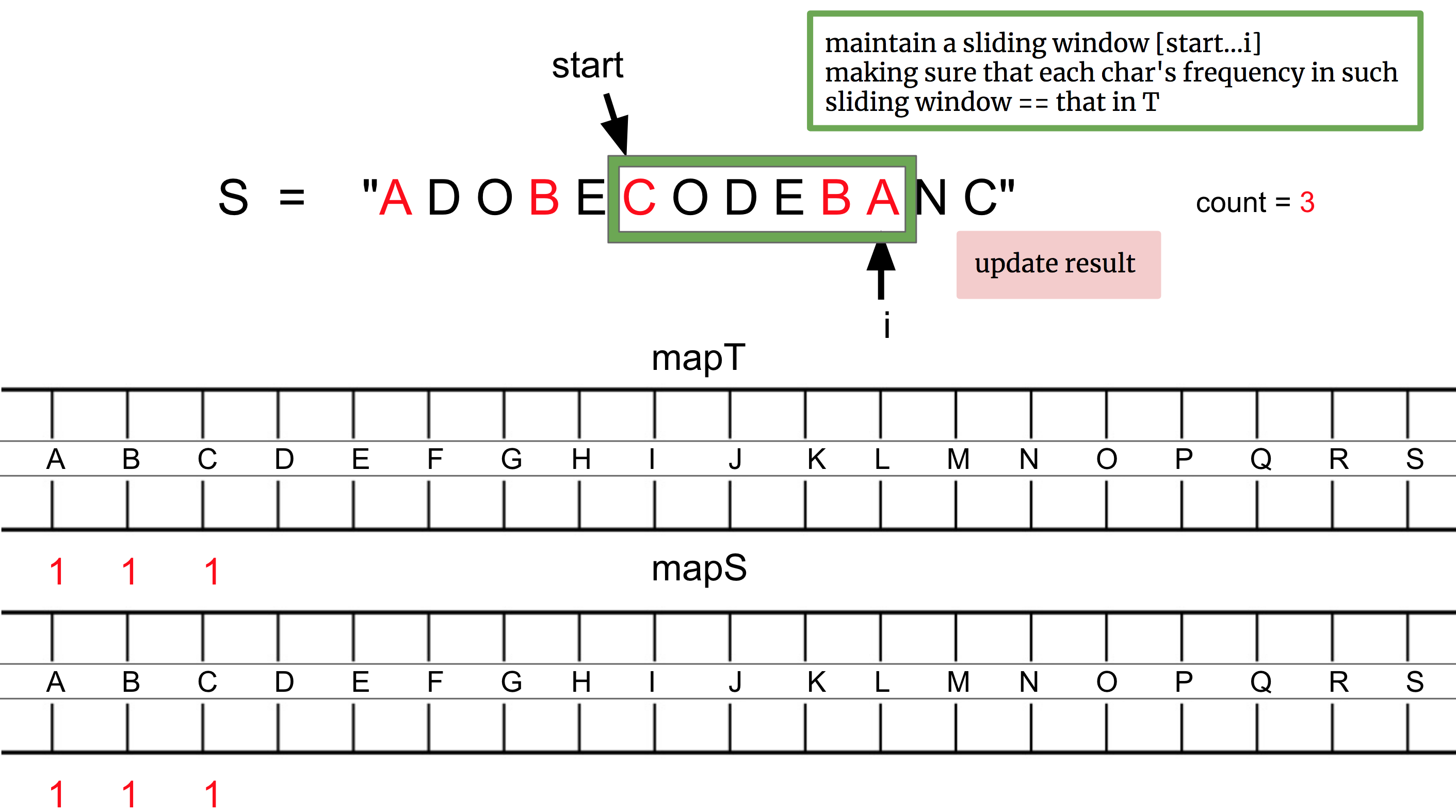
code
1 class Solution { 2 public String minWindow(String S, String T) { 3 String result = ""; 4 if (S == null || S.length() == 0) return result; 5 int[] mapT = new int[256]; 6 int[] mapS = new int[256]; 7 int count = 0; 8 int leftMost = 0; 9 for(int i = 0; i < T.length(); i++){ 10 mapT[T.charAt(i)] ++; 11 } 12 13 for(int i = 0; i < S.length(); i++){ 14 char s = S.charAt(i); 15 mapS[s]++; 16 if(mapT[s] >= mapS[s]){ 17 count ++; 18 } 19 20 if(count == T.length()){ 21 while(mapS[S.charAt(leftMost)] > mapT[S.charAt(leftMost)]){ 22 if(mapS[S.charAt(leftMost)] > mapT[S.charAt(leftMost)]){ 23 mapS[S.charAt(leftMost)]--; 24 } 25 leftMost ++; 26 } 27 if(result.equals("") || i - leftMost + 1 < result.length()){ 28 result = S.substring(leftMost, i+1); 29 } 30 } 31 } 32 return result; 33 } 34 }
二刷:
对于出现在S但不出现在T的那些“配角” character的处理,
最好的方式是,边扫S边用map将其频率一并记上。
这样,在判断 while(mapS[S.charAt(leftMost)] > mapT[S.charAt(leftMost)]) 这个逻辑的时候,
这些“配角”character会因为只出现在S但不出现在T
而直接被left++给做掉
1 class Solution { 2 public String minWindow(String s, String t) { 3 String result = ""; 4 if(s == null || s.length() == 0 || s.length() < t.length()) return result; 5 6 int [] mapT = new int [128]; 7 for(Character c : t.toCharArray()){ 8 mapT[c]++; 9 } 10 11 int left = 0; 12 int count = t.length(); 13 int[] mapS = new int[128]; 14 for(int i = 0; i < s.length(); i++){ 15 char c = s.charAt(i); 16 mapS[c] ++ ; 17 if(mapT[c] >= mapS[c]){ 18 count --; 19 } 20 if(count == 0){ 21 while(mapS[s.charAt(left)] > mapT[s.charAt(left)]){ 22 mapS[s.charAt(left)] --; 23 left++; 24 } 25 if (result.equals("") || i - start + 1 < result.length()) { 26 result = s.substring(start, i + 1); 27 } 28 } 29 } 30 return result; 31 } 32 }




